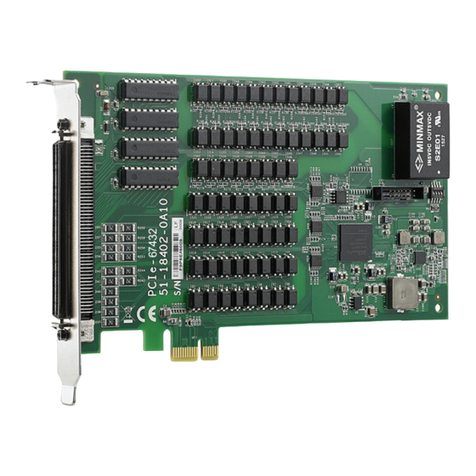
II
Table of Contents
Geng Service �������������������������������������������������������������������������������������������������� I
1 Introducon������������������������������������������������������������������������������������������������ 1
1�1 Features ��������������������������������������������������������������������������������������������� 1
1.2 Applicaons ��������������������������������������������������������������������������������������� 1
1.3 Specicaons ������������������������������������������������������������������������������������� 2
1�3�1 Analog Input ��������������������������������������������������������������������������� 2
1�3�2 Timebase �������������������������������������������������������������������������������� 7
1�3�3 Triggers ����������������������������������������������������������������������������������� 8
1.3.4 General Specicaons ������������������������������������������������������������� 8
1.4 Schemacs and I/O ���������������������������������������������������������������������������� 9
1.5 Soware Support ������������������������������������������������������������������������������11
1�5�1 SDK ����������������������������������������������������������������������������������������11
1�5�2 DSA-DASK�������������������������������������������������������������������������������11
2 Geng Started�������������������������������������������������������������������������������������������12
2�1 Package Contents ������������������������������������������������������������������������������12
2.2 Installaon Environment �������������������������������������������������������������������12
2�3 Installing the Module ������������������������������������������������������������������������13
3 Operaons �������������������������������������������������������������������������������������������������14
3.1 Funconal Block Diagram������������������������������������������������������������������14
3�2 Analog Input Channel������������������������������������������������������������������������14
3.2.1 Analog Input Front-End Conguraon ������������������������������������14
3�2�2 Input Range and Data Format�������������������������������������������������15
3�2�3 ADC and Analog Input Filter ���������������������������������������������������16
3�2�4 DMA Data Transfer�����������������������������������������������������������������16
3�3 Trigger Source and Trigger Modes������������������������������������������������������18
3�4 Trigger Mode�������������������������������������������������������������������������������������20
3�5 ADC Timing Control ���������������������������������������������������������������������������22
3�5�1 Timebase �������������������������������������������������������������������������������22
3�5�2 DDS Timing vs� ADC����������������������������������������������������������������22
3�5�3 Filter Delay in ADC �����������������������������������������������������������������22
3.6 Synchronizing Mulple Modules �������������������������������������������������������23
3.6.1 SSI_TIMEBASE ������������������������������������������������������������������������24
3�6�2 SSI_SYNC_START ��������������������������������������������������������������������24
3�6�3 SSI_AD_TRIG ��������������������������������������������������������������������������24
Appendix A Calibraon�����������������������������������������������������������������������������������25
A.1 Calibraon Constant �������������������������������������������������������������������������25
A.2 Auto-Calibraon �������������������������������������������������������������������������������25
Important Safety Instrucons��������������������������������������������������������������������������26




























